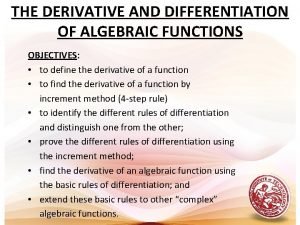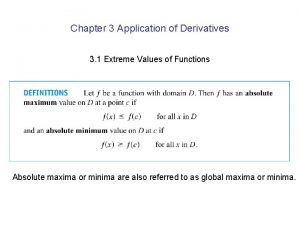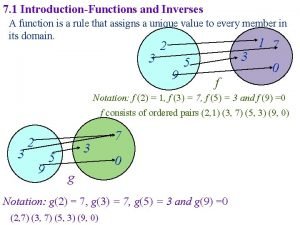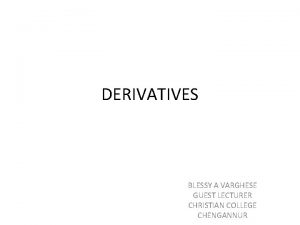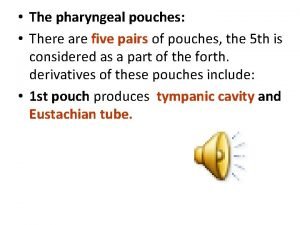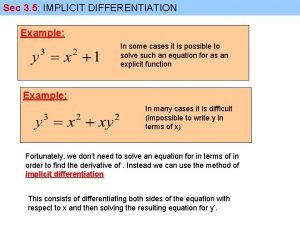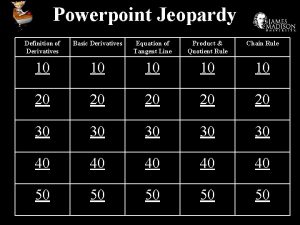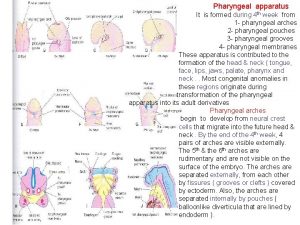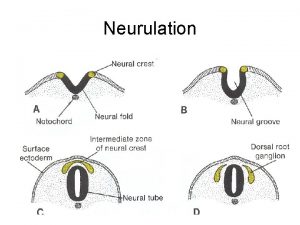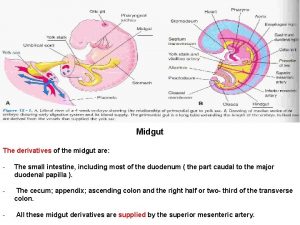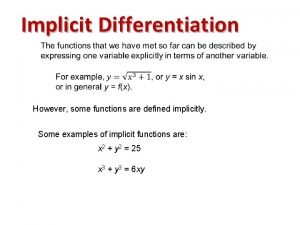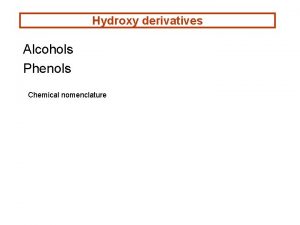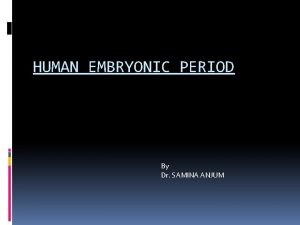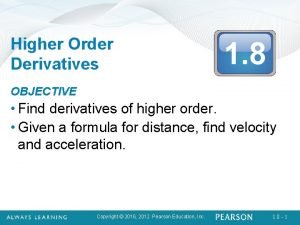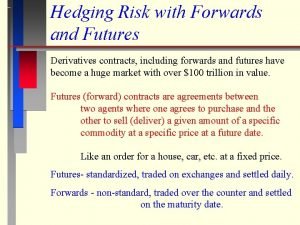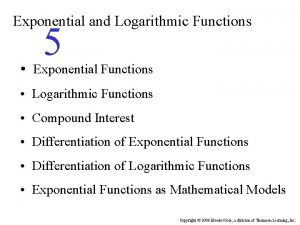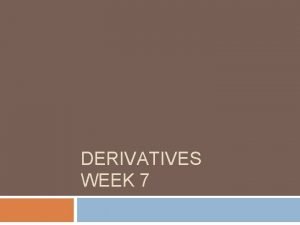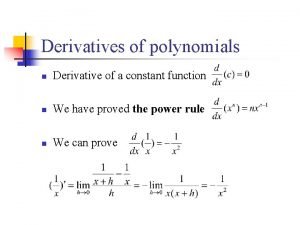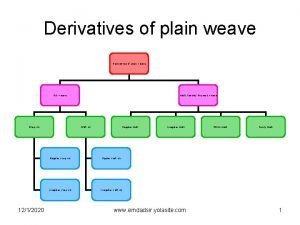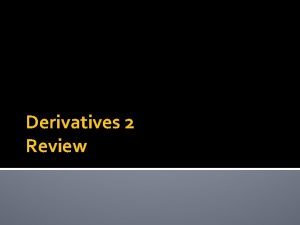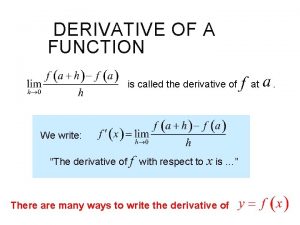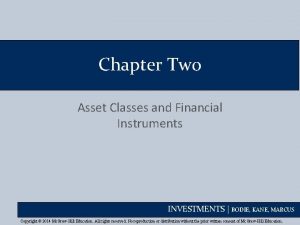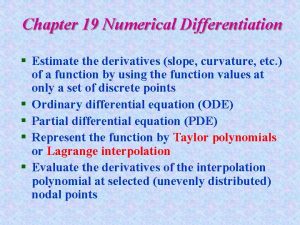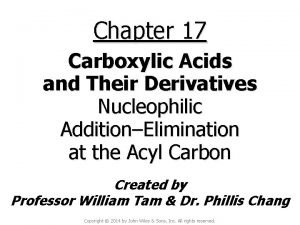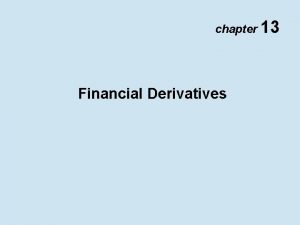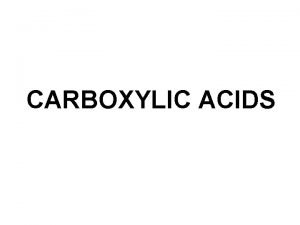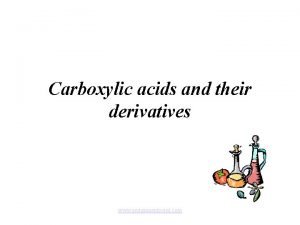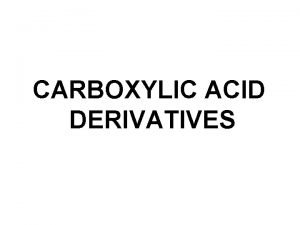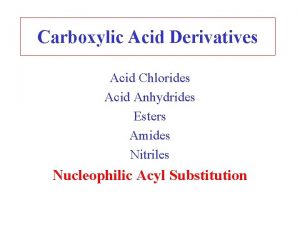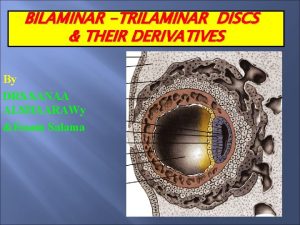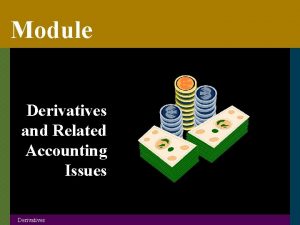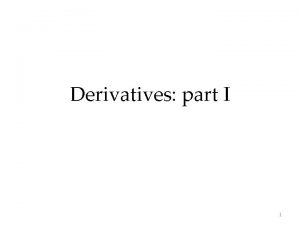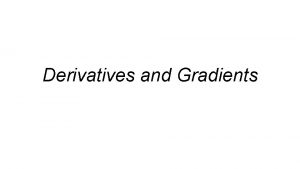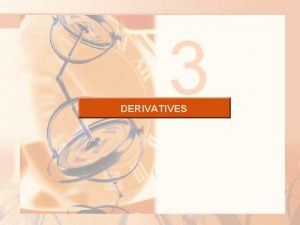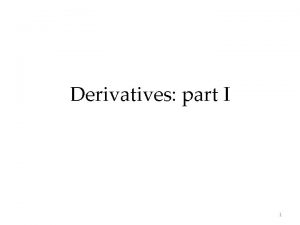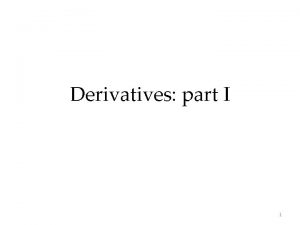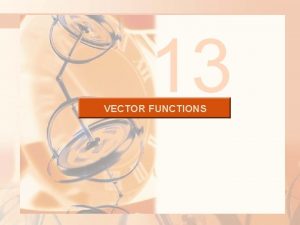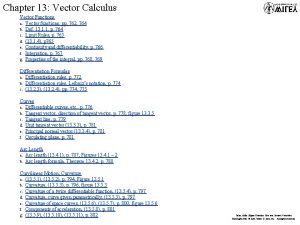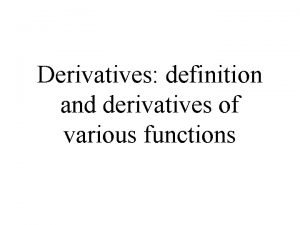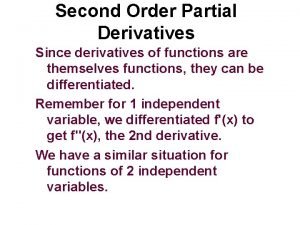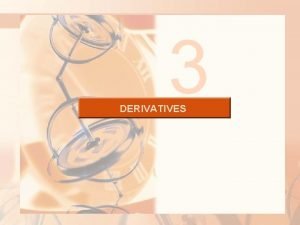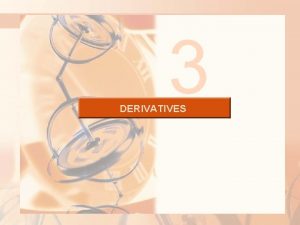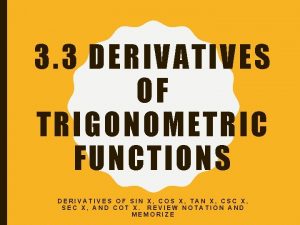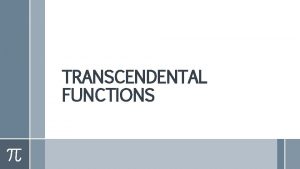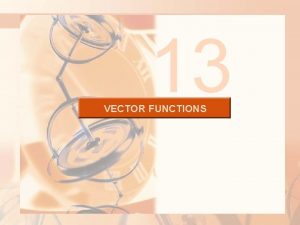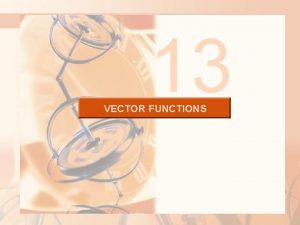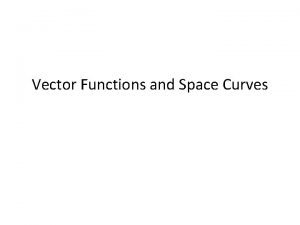13 VECTOR FUNCTIONS VECTOR FUNCTIONS 13 2 Derivatives












































- Slides: 44

13 VECTOR FUNCTIONS

VECTOR FUNCTIONS 13. 2 Derivatives and Integrals of Vector Functions In this section, we will learn how to: Develop the calculus of vector functions.

DERIVATIVES The derivative r’ of a vector function is defined in much the same way as for real-valued functions.

DERIVATIVE if this limit exists. Equation 1

DERIVATIVE The geometric significance of this definition is shown as follows.

SECANT VECTOR If the points P and Q have position vectors r(t) and r(t + h), then the vector r(t + h) – r(t). § This can therefore be regarded as a secant vector. represents

DERIVATIVES If h > 0, the scalar multiple (1/h)(r(t + h) – r(t)) has the same direction as r(t + h) – r(t). § As h → 0, it appears that this vector approaches a vector that lies on the tangent line.

TANGENT VECTOR For this reason, the vector r’(t) is called the tangent vector to the curve defined by r at the point P, provided: § r’(t) exists § r’(t) ≠ 0

TANGENT LINE The tangent line to C at P is defined to be the line through P parallel to the tangent vector r’(t).

UNIT TANGENT VECTOR We will also have occasion to consider the unit tangent vector:

DERIVATIVES The following theorem gives us a convenient method for computing the derivative of a vector function r: § Just differentiate each component of r.

DERIVATIVES Theorem 2 If r(t) = ‹f(t), g(t), h(t)› = f(t) i + g(t) j + h(t) k, where f, g, and h are differentiable functions, then: r’(t) = ‹f’(t), g’(t), h’(t)› = f’(t) i + g’(t) j + h’(t) k

DERIVATIVES Proof

DERIVATIVES Example 1 a. Find the derivative of r(t) = (1 + t 3) i + te–t j + sin 2 t k b. Find the unit tangent vector at the point where t = 0.

DERIVATIVES Example 1 a According to Theorem 2, we differentiate each component of r: r’(t) = 3 t 2 i + (1 – t)e–t j + 2 cos 2 t k

DERIVATIVES Example 1 b As r(0) = i and r’(0) = j + 2 k, the unit tangent vector at the point (1, 0, 0) is:

DERIVATIVES Example 2 For the curve , find r’(t) and sketch the position vector r(1) and the tangent vector r’(1).

DERIVATIVES We have: and Example 2

Example 2 DERIVATIVES The curve is a plane curve. Elimination of the parameter from the equations , y = 2 – t gives: y = 2 – x 2, x≥ 0

DERIVATIVES Example 2 The position vector r(1) = i + j starts at the origin. The tangent vector r’(1) starts at the corresponding point (1, 1).

Example 3 DERIVATIVES Find parametric equations for the tangent line to the helix with parametric equations x = 2 cos t y = sin t at the point (0, 1, π/2). z=t

DERIVATIVES Example 3 The vector equation of the helix is: r(t) = ‹ 2 cos t, sin t, t› Thus, r’(t) = ‹– 2 sin t, cos t, 1›

DERIVATIVES Example 3 The parameter value corresponding to the point (0, 1, π/2) is t = π/2. § So, the tangent vector there is: r’(π/2) = ‹– 2, 0, 1›

DERIVATIVES Example 3 The tangent line is the line through (0, 1, π/2) parallel to the vector ‹– 2, 0, 1›. § So, by Equations 2 in Section 12. 5, its parametric equations are:

DERIVATIVES The helix and the tangent line in the Example 3 are shown.

SECOND DERIVATIVE Just as for real-valued functions, the second derivative of a vector function r is the derivative of r’, that is, r” = (r’)’. § For instance, the second derivative of the function in Example 3 is: r”(t) =‹– 2 cos t, sin t, 0›

DIFFERENTIATION RULES The next theorem shows that the differentiation formulas for real-valued functions have their counterparts for vector-valued functions.

DIFFERENTIATION RULES Theorem 3 Suppose: § u and v are differentiable vector functions § c is a scalar § f is a real-valued function

DIFFERENTIATION RULES Then, Theorem 3

DIFFERENTIATION RULES Theorem 3

DIFFERENTIATION RULES This theorem can be proved either: § Directly from Definition 1 § By using Theorem 2 and the corresponding differentiation formulas for real-valued functions

DIFFERENTIATION RULES The proof of Formula 4 follows. § The remaining are left as exercises.

FORMULA 4 Proof Let u(t) = ‹f 1(t), f 2(t), f 3(t)› v(t) = ‹g 1(t), g 2(t), g 3(t)› § Then,

FORMULA 4 Proof § So, the ordinary Product Rule gives:

DIFFERENTIATION RULES Example 4 Show that, if |r(t)| = c (a constant), then r’(t) is orthogonal to r(t) for all t.

DIFFERENTIATION RULES Example 4 Since r(t) ∙ r(t) = |r(t)|2 = c 2 and c 2 is a constant, Formula 4 of Theorem 3 gives:

DIFFERENTIATION RULES Thus, r’(t) ∙ r(t) = 0 § This says that r’(t) is orthogonal to r(t).

DIFFERENTIATION RULES Geometrically, this result says: § If a curve lies on a sphere with center the origin, then the tangent vector r’(t) is always perpendicular to the position vector r(t).

INTEGRALS The definite integral of a continuous vector function r(t) can be defined in much the same way as for real-valued functions—except that the integral is a vector.

INTEGRALS However, then, we can express the integral of r in terms of the integrals of its component functions f, g, and h as follows. § We use the notation of Chapter 5.

INTEGRALS

INTEGRALS Thus, § This means that we can evaluate an integral of a vector function by integrating each component function.

INTEGRALS We can extend the Fundamental Theorem of Calculus to continuous vector functions: § Here, R is an antiderivative of r, that is, R’(t) = r(t). § We use the notation ∫ r(t) dt for indefinite integrals (antiderivatives).

INTEGRALS Example 5 If r(t) = 2 cos t i + sin t j + 2 t k, then where: § C is a vector constant of integration §
 Differentiation formulas of trigonometric functions
Differentiation formulas of trigonometric functions Derivative of inverse function
Derivative of inverse function Tan inverse derivative
Tan inverse derivative Derivative of inverse hyperbolic functions
Derivative of inverse hyperbolic functions Derivative of hyperbolic functions
Derivative of hyperbolic functions Functions of derivatives market
Functions of derivatives market Formula for partitioning a line segment
Formula for partitioning a line segment Ay cosa
Ay cosa How is vector resolution the opposite of vector addition
How is vector resolution the opposite of vector addition Fixed vector definition
Fixed vector definition Lateral lingual swellings
Lateral lingual swellings Implicitly differentiate
Implicitly differentiate Mother sauces derivatives
Mother sauces derivatives Basic derivatives
Basic derivatives Pretrematic and post trematic nerves
Pretrematic and post trematic nerves Pharyngeal pouches derivatives
Pharyngeal pouches derivatives Least reactive carboxylic acid derivatives
Least reactive carboxylic acid derivatives Mesoderm
Mesoderm Midgut derivatives
Midgut derivatives Calculus implicit differentiation
Calculus implicit differentiation Urushiol is a hydroxy derivative of phenol.
Urushiol is a hydroxy derivative of phenol. Mesoderm derivatives
Mesoderm derivatives Higher order derivatives meaning
Higher order derivatives meaning Basis risk arises due to
Basis risk arises due to Dermatomyotom
Dermatomyotom Exponent to log
Exponent to log Vitelline vein derivatives
Vitelline vein derivatives Veins
Veins Derivatives week
Derivatives week Istoxx factor indexes futures
Istoxx factor indexes futures What is the derivative of a constant
What is the derivative of a constant Weft rib weave
Weft rib weave Derivatives 2
Derivatives 2 Constant rule derivatives examples
Constant rule derivatives examples Derivatives asset class
Derivatives asset class Finite divided difference
Finite divided difference Carboxylic acid derivatives
Carboxylic acid derivatives Forwards vs futures vs options vs swaps
Forwards vs futures vs options vs swaps Fischer esterification mechanism
Fischer esterification mechanism Carboxylic acid formula
Carboxylic acid formula Acylation of carboxylic acid
Acylation of carboxylic acid Order of reactivity of carboxylic acid derivatives
Order of reactivity of carboxylic acid derivatives Coarcotation
Coarcotation Bilaminar germ disc
Bilaminar germ disc Metencephalon derivatives
Metencephalon derivatives
